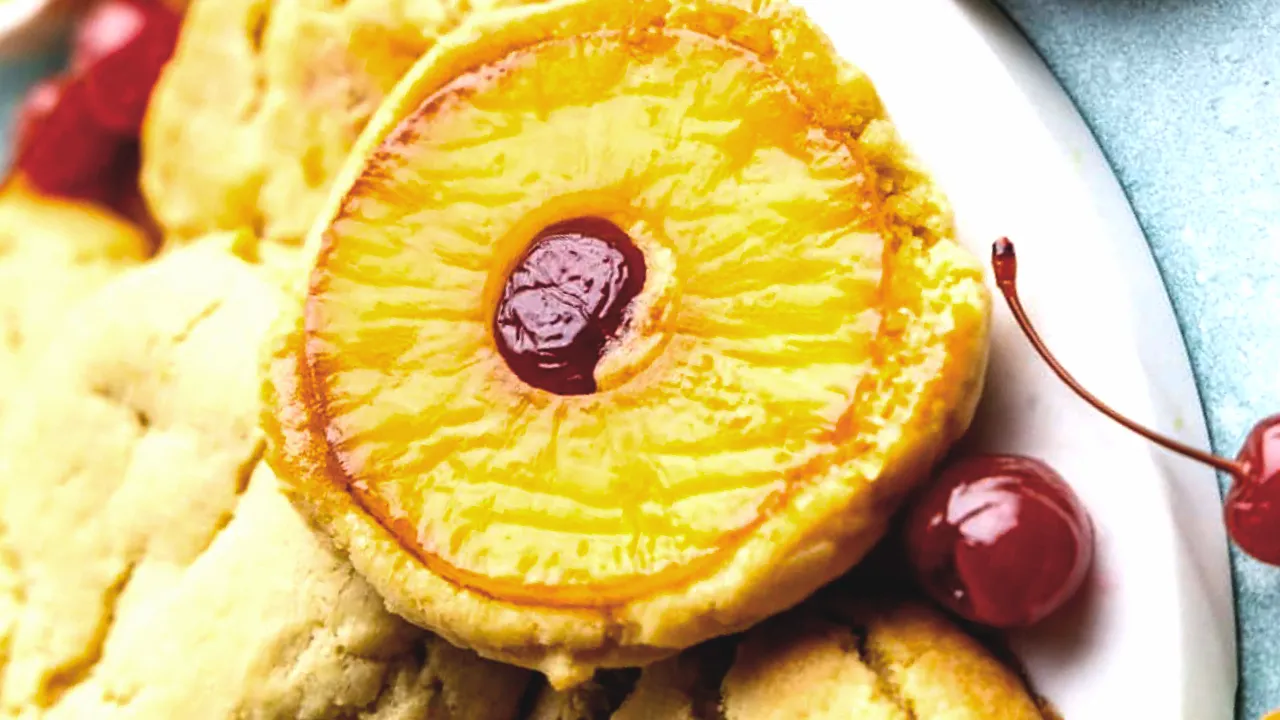Many bakers wonder, what is the secret to a good croissant? The answer lies in mastering lamination, using high-quality ingredients, and avoiding common mistakes.
In this article, we’ll uncover the secrets to making perfect croissants, including tips from professional bakers, common mistakes to avoid, and step-by-step techniques to achieve bakery-quality results at home. Whether you’re an experienced baker or a beginner, this guide will help you master the art of croissants.
Understanding What Makes a Perfect Good Croissant
If you’ve ever asked yourself, what is the secret to a good croissant? it starts with understanding the importance of layers and butter.
1. The Importance of Layers and Lamination
- Flaky Layers:
- The hallmark of a great croissant is its distinct flaky layers, achieved through the process of lamination. This involves folding butter into the dough multiple times to create hundreds of layers.
- When baked, these layers puff up, creating the signature airy texture.
- Crisp Exterior:
- A perfect croissant has a golden, slightly crisp crust that provides a satisfying contrast to its soft interior.
Pro Tip: For optimal lamination, ensure the butter and dough are at the same temperature to prevent tearing during folding.
2. Balancing Butter and Dough
- Butter-to-Dough Ratio:
- The butter must be evenly distributed throughout the dough to achieve a consistent texture and rich flavor. Too much butter can cause greasiness, while too little results in dryness.
- Quality of Butter:
- High-fat, European-style butter works best due to its lower water content and enhanced flavor.
Pro Tip: Use unsalted butter to have complete control over the flavor of the dough.
Why These Elements Matter
The layers and butter are what set croissants apart from other pastries. They require patience, precision, and an understanding of the science behind baking to achieve perfection.
Secrets to Making a Perfect Good Croissant at Home
When exploring what is the secret to a good croissant, high-quality ingredients like European butter and precise techniques are essential.

1. Using High-Quality Ingredients
- Flour:
- Use bread flour or all-purpose flour with a high protein content to create the structure needed for flaky layers.
- Butter:
- Choose European-style butter with at least 82% fat for richer flavor and better lamination.
- Yeast:
- Active dry or instant yeast ensures a proper rise. Always check that your yeast is fresh and active.
Pro Tip: Avoid skimping on ingredient quality, as croissants depend heavily on the richness and structure provided by butter and flour.
2. Mastering the Lamination Process
- Chill the Butter and Dough:
- Ensure both the butter and dough are cold but pliable to prevent tearing during the folding process.
- Chill between folds to maintain the separation of layers.
- Fold Precisely:
- Use a rolling pin to flatten the dough and butter evenly. Perform at least three folds (a book fold and two letter folds) to create enough layers.
Pro Tip: Work quickly and avoid overhandling the dough to keep the butter from melting.
3. Controlling Temperature During Preparation
- Keep Everything Cool:
- Warm temperatures can cause the butter to melt prematurely, ruining the lamination.
- Work in a cool kitchen or refrigerate your tools if necessary.
- Proof at the Right Temperature:
- Proofing should occur at around 75°F (24°C) to allow the croissants to rise slowly and evenly.
Pro Tip: Cover the croissants with a damp cloth during proofing to prevent the dough from drying out.
Why These Steps Matter
Each step of the croissant-making process contributes to the final product’s texture, flavor, and appearance. Precision and patience are essential to achieve the perfect balance of layers and richness.
Common Mistakes to Avoid When Making Croissants
Rushing the proofing process is a common issue when learning what is the secret to a good croissant.
1. Overworking the Dough
- Why It’s a Problem:
- Overkneading the dough develops too much gluten, making it tough and difficult to roll out during lamination.
- How to Avoid It:
- Knead only until the dough is smooth and elastic. Allow it to rest between steps to relax the gluten.
Pro Tip: Use gentle pressure when rolling out the dough to avoid overworking it.
2. Not Chilling the Butter Properly
- Why It’s a Problem:
- Warm butter can melt into the dough, ruining the layers and causing greasy, dense croissants.
- How to Avoid It:
- Chill the butter block and dough thoroughly before and between folds. Both should be cold but pliable to ensure even lamination.
Pro Tip: If the butter starts to melt during lamination, refrigerate the dough for 20-30 minutes before continuing.
3. Rushing the Proofing Process
- Why It’s a Problem:
- Under-proofed croissants won’t rise properly and may have a dense interior, while over-proofed ones can collapse in the oven.
- How to Avoid It:
- Proof the croissants until they are visibly puffy and jiggle slightly when moved, which usually takes 1.5 to 2 hours.
Pro Tip: Use a warm, draft-free space for proofing, and monitor the dough closely to prevent overproofing.
Why Avoiding Mistakes Matters
Each step of croissant preparation builds on the last, so avoiding these mistakes ensures your effort results in flaky, buttery perfection.
How Professional Bakers Achieve the Perfect Good Croissant
Professional bakers often emphasize precision and patience as the secret to a good croissant. But if you’re wondering, what is the secret to a good croissant? It’s also about balancing butter and dough with the right tools.
1. Precision in Measurements
- Why It’s Important:
- Baking is a science, and precise measurements ensure consistent results.
- How to Achieve It:
- Use a digital kitchen scale to weigh ingredients rather than relying on volume measurements.
Pro Tip: Even slight variations in butter or flour amounts can affect lamination, so measure carefully.
2. Using Specialized Tools
- Pastry Rollers and Cutters:
- Professional bakers use rolling pins with precise weight and pastry cutters for even shapes.
- Silicone Baking Mats:
- Provide a non-stick surface for rolling and folding the dough without adding excess flour.
- Steam Ovens:
- Many bakeries use ovens with steam injection to create a glossy crust and even baking.
Pro Tip: At home, create steam by placing a tray of water at the bottom of your oven during baking.
3. Expert Tips for Even Baking
- Chilling Between Steps:
- Bakers maintain a consistent temperature throughout the process to ensure the butter doesn’t melt prematurely.
- Rotating Trays:
- Croissants bake more evenly when trays are rotated halfway through baking.
- Testing Layers:
- Professionals gently peel apart layers in test batches to ensure proper lamination.
Pro Tip: Brush croissants with an egg wash just before baking to achieve a golden, shiny crust.
Why Professional Techniques Matter
The attention to detail and specialized methods used by professional bakers can elevate your croissants, even in a home kitchen.
FAQs About Perfect Good Croissant
Here are answers to some commonly asked questions about what makes croissants perfect, helping you master this delicate pastry.
1. Why Is Butter So Important in Croissants?
- Role of Butter:
- Butter creates the flaky layers, rich flavor, and tender crumb characteristic of croissants.
- The quality of the butter directly impacts the taste and texture.
Pro Tip: Use European-style butter with higher fat content for better lamination and flavor.
2. How Many Layers Should a Croissant Have?
- Traditional Layering:
- A classic croissant has 27 to 81 layers, achieved through multiple folds (typically three).
- The layers create the light, airy structure when baked.
Pro Tip: Ensure precise folding during lamination to maintain distinct layers. Avoid pressing too hard, which can merge layers.
3. Can I Make Croissants Without Special Equipment?
Yes! While professional tools help, croissants can still be made at home with basic equipment:
- Rolling Pin: Essential for laminating the dough evenly.
- Baking Sheet and Parchment Paper: Work well for proofing and baking.
- Home Oven: Create steam by placing a shallow pan of water in the oven to replicate a professional steam oven.
Pro Tip: Chill your rolling pin or use a marble one to keep the butter cold during lamination.
Why These FAQs Matter
Understanding the answers to these common questions helps you refine your technique and troubleshoot any challenges during the process.
Conclusion: Mastering the Art of Good Croissant
By now, you should have a clear understanding of what is the secret to a good croissant and how to create one with flaky layers and buttery perfection.
Making perfect croissants requires a combination of high-quality ingredients, precise techniques, and patience. By understanding the secrets to flaky layers, balancing butter and dough, and avoiding common mistakes, you can create bakery-quality croissants at home.
Key Takeaways
- Secrets to Success: High-fat butter, proper lamination, and controlled proofing are essential.
- Common Mistakes to Avoid: Don’t overwork the dough, rush the proofing process, or skip chilling steps.
- Professional Tips: Use precise measurements, chill between steps, and create steam for even baking.
For more insights, explore our Croissant Recipe Guide or check out Baking Tips for Flaky Pastries for additional techniques and inspiration.



